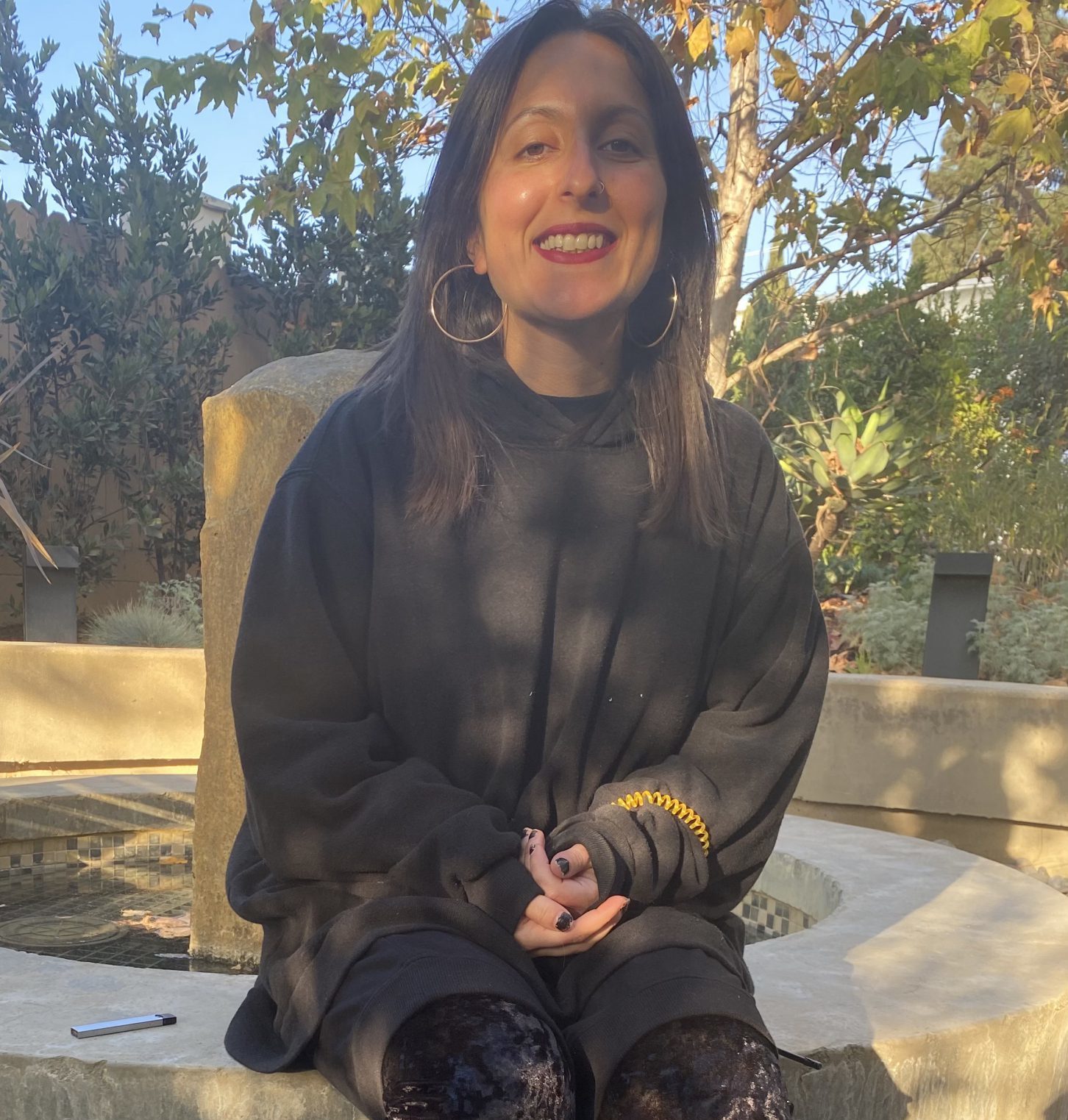Earlier this summer, Jamie S., a resident at Beit T’Shuvah, found herself in a motel room in Tulsa, Oklahoma, at the end of a years-long fentanyl and methamphetamine run. The Florida native had finally been “found out” by her family after she had gone into withdrawals while helping out her brother and sister-in-law care for her nieces in Texas. Luckily for her, she was only a few degrees of separation from Beit T’Shuvah. Jamie’s brother had reached out to their parents, who had contacted their congregation’s rabbi, who had gone to rabbinical school with the brother of our founding rabbi, Mark Borovitz. Her parent’s rabbi enthusiastically recommended Beit T’Shuvah as an opportunity for Jamie to start her road to recovery.
Jamie grew up on the west coast of Florida, in the Tampa Bay area. “I started smoking weed when I was 14 with my best girlfriend and some of the guys in my school.” She soon noticed that her affinity for marijuana was different from her peers when none of the other girls in her class wanted to smoke weed. “They thought it was gross and like unladylike.” She then added mushrooms to her menu. “I thought I was expanding my mind.” Whenever she drank alcohol, she would drink to excess, much like her usage of pot and shrooms. “I really don’t think there was ever a time I was using substances where i wasn’t using them addictively.”
The day before Jamie graduated high school, she was accepted into the University of Maryland, where her drinking accelerated. “It was just a part of the school culture—you drank to blackout—so that’s what I did.” Her friends who didn’t attend large state universities were concerned about her drinking, telling her that her drinking was out of control. Still, she didn’t begin to see it as an issue herself until after graduation. Back in Florida for the year after graduation, she was at a beach club with friends when her drink was spiked. “My friends had to take me to another friend’s place, and her father came in and saw me puking. For some reason, I was like oh my God, this is an issue. I just felt really ashamed.”
After her year back home, Jamie went to India. She significantly cut back on her drinking while abroad, but found that the pharmacies in India were a lot more lax in dispensing pain medication like Tramadol. After seven months in India and another month in Thailand, she returned to America without finding a direction for her future.
Eventually, Jamie found a program in Washington, DC that allowed her to teach while obtaining her credential for early childhood education. “I had wanted to teach when I was in school, but that wasn’t my major.” At the same time, she was becoming a really heavy partier, this time with harder drugs. “Drinking had sort of left the picture, but a lot of ketamine and cocaine.” After she became a fixture on the local Washington/Baltimore underground party circuit, she started getting involved on the production side of these events.
Jamie soon became accustomed to living a double life—school teacher during the day, event producer nights and weekends. During her second year of teaching, she obtained an Adderall prescription. “That was so I could function during the day and also do the bartending/box office/artist hospitality thing at night.” This compartmentalization worked for the time being. “Those two circles never crossed.”
Jamie moved to California over eight years ago after a friend from the Washington/Baltimore scene invited her out to work in the Los Angeles scene. “I was frustrated with my school and I was hitting the ceiling in terms of production in the local scene. I had always wanted to live in California.” She continued to abuse ketamine but continued to moderate her drinking. “I was drinking, having beers at parties or whiskey or wine, but I wasn’t blacking out like in college.”
The beginning of Jamie’s opioid addiction begins like so many others—looking for relief from physical pain. “I was complaining that my back hurt, so I was going with a friend to get Vicodin. I had always just taken Vicodin from friends when my back hurt.” This connection didn’t have Vicodin, but they did have heroin. “I knew in the back of my head if heroin was presented, I wasn’t going to say no.” Like many other addicts, Jamie didn’t see heroin use as a problem per se. “It was getting strung out that was a problem, and I knew I didn’t want to get strung out.” She took the heroin and returned the next day for more.
A few years later, Jamie came across a batch of what she assumed was high-quality heroin. “I thought it was just really good dope. Everyone was saying this was really good and to be careful.” That was her introduction to fentanyl, which she began to use exclusively over heroin. Even then, she didn’t yet see her usage as problematic.
That attitude changed a couple of years ago when Jamie started using methamphetamine regularly. “I had dabbled in it since DC, just for party purposes, snorting it, but then about two years ago, I started smoking it every day.” She was taking the meth as a way to manage the side effects of fentanyl, which was too sedating to use alone. “I was a functioning person, I had a job, I had shit to do. It was my morning coffee.” She also switched from snorting fentanyl to smoking it, which limited where she could use, and also had the extra burden of having to carry paraphernalia wherever she went.
Around this time, Jamie started getting hints that her usage was out of hand. “A drug dealer told me I should go to rehab a few times.” But she felt stuck between a rock and a hard place. “The idea of being sick from detoxing was more terrifying than the idea of getting better.” She also didn’t want to admit to her family that she needed help. “I thought that it would end any relationship.” Nevertheless, it was her family who was there when she was finally able to admit defeat and get admitted to Beit T’Shuvah. “I was kicking in a hotel room while my family figured it all out.”
Upon arrival here, Jamie immediately took the attitude of surrender. “I wasn’t going to resist. I’m here to get better. I’m here to learn how to function so I don’t have to leave and go use again.” Nearly four months later, she is a Program Facilitator intern here on campus, something she wasn’t planning when she arrived. “When I got here, that wasn’t a goal. I always wanted to work in some form of social work.” She credits the community here to opening up that possibility. “It was how much this place has done for people, and for me, I almost feel like it’s an obligation to give back to it.”

